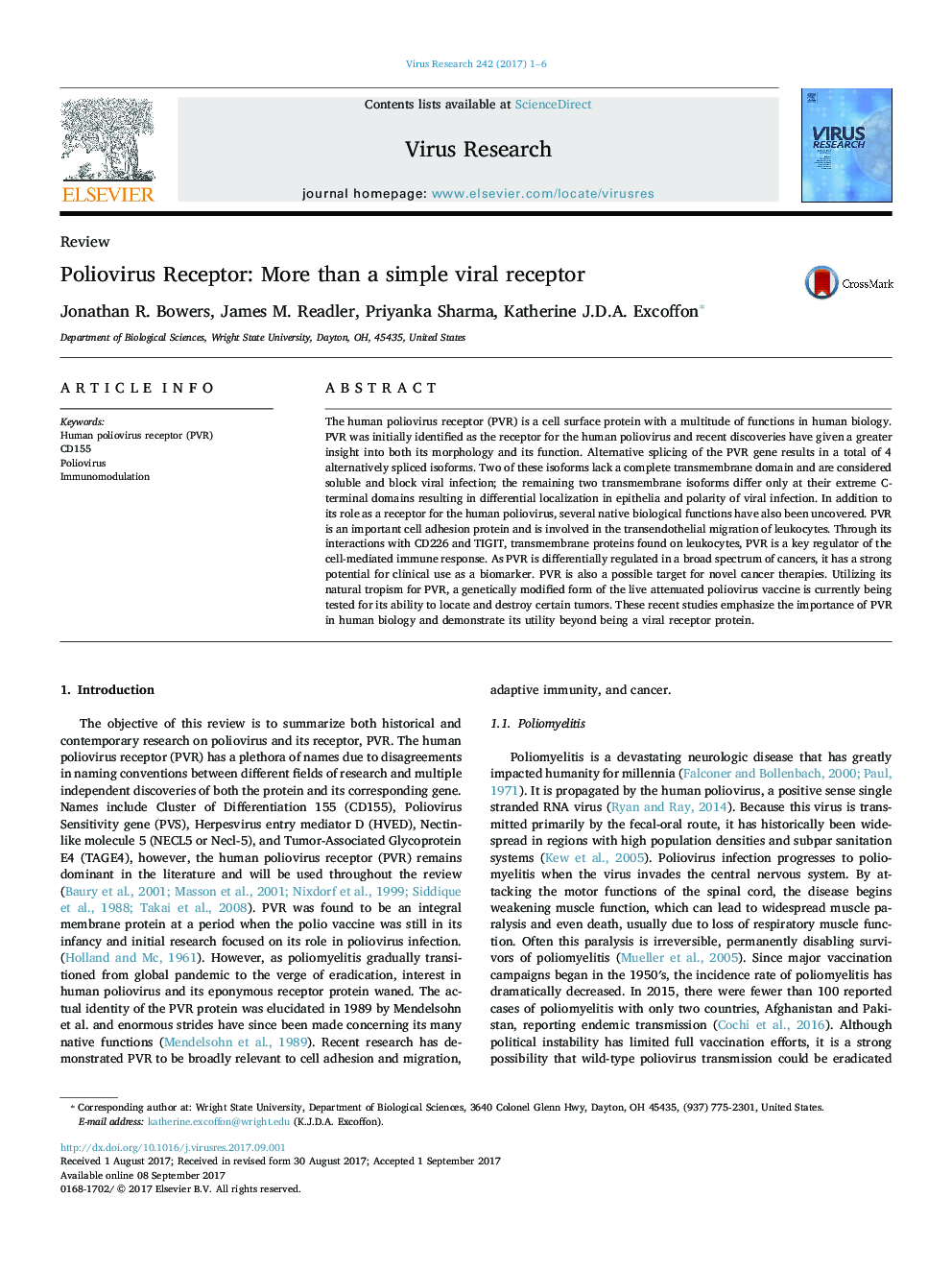| Article ID | Journal | Published Year | Pages | File Type |
|---|---|---|---|---|
| 5675257 | Virus Research | 2017 | 6 Pages |
â¢Human PVR (CD155) is both a viral receptor and immunomodulatory protein.â¢PVR function depends on expression of alternative protein isoforms.â¢Poliovirus is a candidate oncolytic virus in clinical trials.
The human poliovirus receptor (PVR) is a cell surface protein with a multitude of functions in human biology. PVR was initially identified as the receptor for the human poliovirus and recent discoveries have given a greater insight into both its morphology and its function. Alternative splicing of the PVR gene results in a total of 4 alternatively spliced isoforms. Two of these isoforms lack a complete transmembrane domain and are considered soluble and block viral infection; the remaining two transmembrane isoforms differ only at their extreme C-terminal domains resulting in differential localization in epithelia and polarity of viral infection. In addition to its role as a receptor for the human poliovirus, several native biological functions have also been uncovered. PVR is an important cell adhesion protein and is involved in the transendothelial migration of leukocytes. Through its interactions with CD226 and TIGIT, transmembrane proteins found on leukocytes, PVR is a key regulator of the cell-mediated immune response. As PVR is differentially regulated in a broad spectrum of cancers, it has a strong potential for clinical use as a biomarker. PVR is also a possible target for novel cancer therapies. Utilizing its natural tropism for PVR, a genetically modified form of the live attenuated poliovirus vaccine is currently being tested for its ability to locate and destroy certain tumors. These recent studies emphasize the importance of PVR in human biology and demonstrate its utility beyond being a viral receptor protein.
